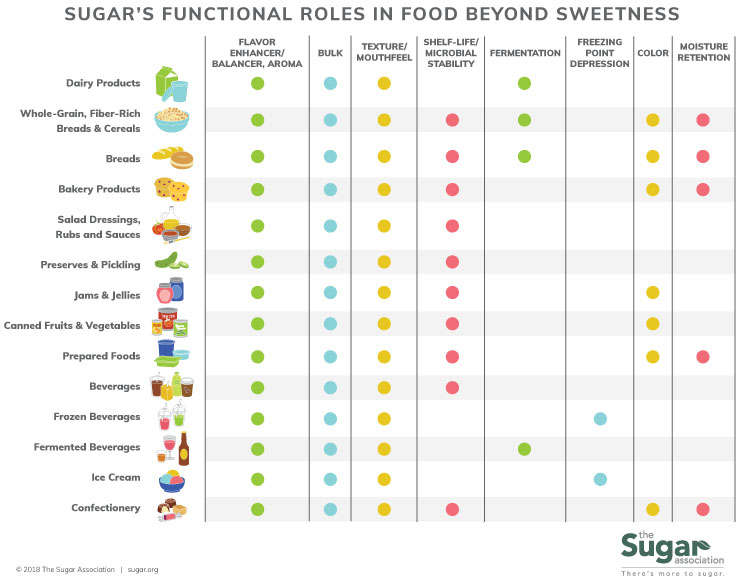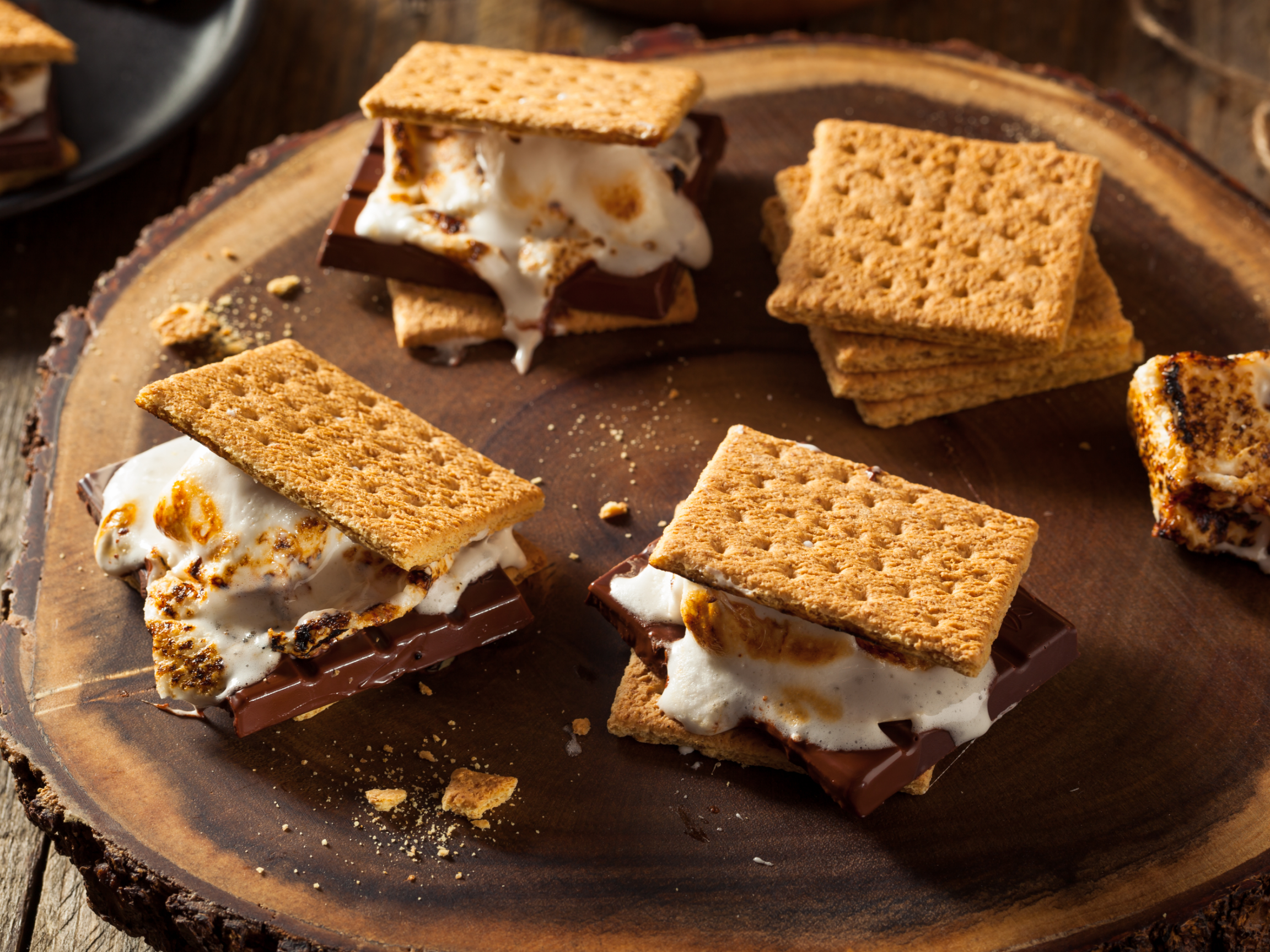More than Sweet
Real sugar may be most famous for being the gold standard for sweetness, but its other functions are just as important. Sugar plays many, yet often unknown, roles in foods and beverages, ranging from balancing acidity to preventing spoilage. Used in recipes for hundreds of years, sugar is an important ingredient often for reasons that have little to do with its sweet flavor. These critical functions of sugar are well-recognized by food scientists, but not so much by the general public. We’ve compiled the many roles of sugar into a handy chart (seen here), and we bet you’ll be as surprised as we were to learn about just how versatile sugar is.
Sugar’s Role in Summer Treats
Focusing on the here and now, what role does sugar play in fun summer foods? Two of our favorite summer treats are s’mores and ice cream. Summer just seems to bring the nostalgia of s’mores around a campfire or a visit to the local ice cream shop. While sweetness is one of sugar’s roles in these treats, there are a lot of other interactions happening too. Let’s break them down.
S’mores
You probably know the three essential elements of a classic s’more: graham cracker, chocolate and a marshmallow. Sugar is an important ingredient in each of these. In the cracker, the sugar contributes to the texture as well as the taste. The sugar absorbs the moisture from other ingredients while it bakes, giving it the crisp crack that you expect. While the sugar in the chocolate cuts the bitterness and acidity of the cocoa and makes it sweet, it also contributes to the smooth texture. For the marshmallows, the spongy texture comes from the air bubbles that are trapped when the sugar syrup and gelatin are beaten together.
The chemical reactions can actually be seen by the eye when you make s’mores around the fire. The golden-brown color can come from two different reactions: caramelization and the Maillard reaction. When the sugar gets hot enough, it starts to break down into smaller molecules that then react with one another. This is called caramelization. These reactions produce new nutty and buttery flavors you can taste and smell on your toasted marshmallow, and give the outside of the marshmallow that satisfying golden color. Certain sugars may also interact with the amino acids in the gelatin of the marshmallow, contributing to the color and flavor of the roasted marshmallow. This is called the Maillard reaction, and it happens at lower temperatures than caramelization does.
Ice Cream
In ice cream, sugar plays a role in the taste, texture, and even the way it melts. While it’s no surprise that sugar contributes to the way your favorite flavor of ice cream tastes, it’s more than sugar’s sweetness that contributes to your enjoyment. Sugar lowers the freezing point of the milk mixture that eventually becomes ice cream. This makes the ice cream freeze more slowly, reducing the risk of large ice crystals forming (No one wants crunchy ice cream!). The creamy texture that results in smaller ice crystals has a positive effect on the sensation in the mouth. Sugar also increases the thickness of the ice cream. All these properties contribute to the sweet experience of enjoying that summer ice cream cone.

No Substitute for the Real Thing
Food scientists will be the first to tell you that removing sugar from a product is complicated because of all the roles it serves. When sugar is removed, often several ingredients have to be added to make up for the difference in taste, texture, preservation and other properties that are lost. Whether it is in a graham cracker or ice cream, there’s no single ingredient that can replace sugar’s flavor and function.
There’s only one real sugar: It is a simple, familiar ingredient derived from sugarbeet and sugarcane plants.

S’mores Trivia
- The first known s’mores recipe was published in the Girl Scouts handbook, Tramping and Trailing with the Girl Scouts, in 1927. The snack was originally called “some mores.”
- Aug. 10 is National S’mores Day.
- According to The S’mores Cookbook, Americans buy 90 million pounds of marshmallows every year. It’s estimated that, during the summer, approximately 50 percent of marshmallows sold are roasted for s’mores.
- Eighty-seven percent of Americans have tried a s’more, according to a survey conducted by Honey Maid.